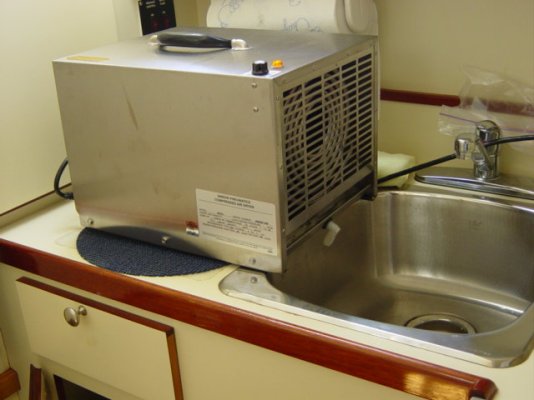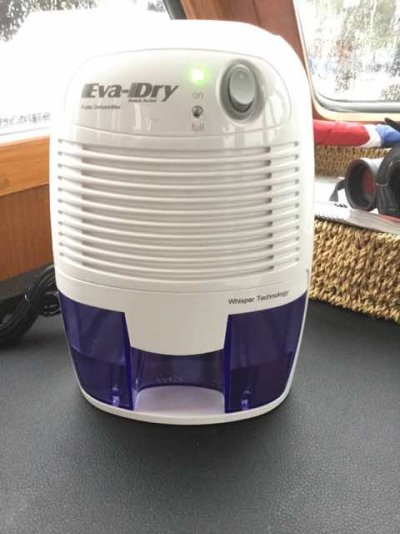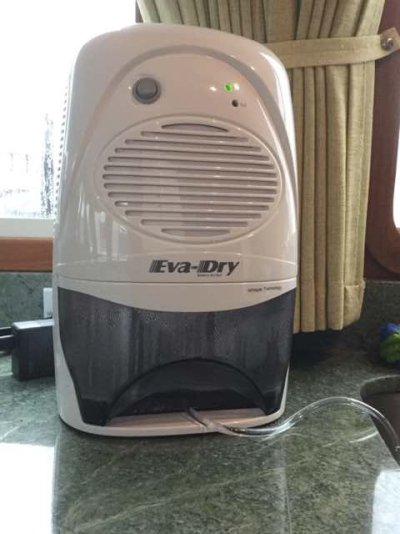I have used small capacity dehumidifiers in my boats for decades. Typically using "small" portable units with a rating of 30-35 pints/day. I will normally have these set to run continuously with a hose that drains into the galley sink. These have worked fantastically well to keep the interior of my boats dry and fresh smelling.
Pros: Very effective and reasonably cheap. Robust units that do well even down to relatively cold temperatures. No problem with running continuously.
Cons: While they are portable, they are not terribly lightweight. I used to take it off the boat on my sailboat, which meant hauling it up the companionway ladder, across the deck, off the boat, then put it into the dock box. This got less easy over time as my knees had more difficulty. They aren't quiet. We would never use them while on the boat due to the noise.
Just last month, I switched from this unit to several of the Peltier type of dehumidifiers. I purchased 2 of the Eva Dry 2200 and 1 of the Eva Dry 1100. I use all three on the boat and so far they have worked well. While the outside humidity have been upwards of 98%, the interior humidity has been hovering between 50-57%.
Pros: These are very quiet units. There is no problem having them running full time while we are sleeping or chatting in the saloon. They don't use a lot of power. The large units are only 14" tall and only weigh a bit over 6 lbs. Very easy to pick up, move, store, etc... I have one in the saloon/galley, another in the forward cabin, and the small one up in the pilot house.
One of the biggest reasons I wanted to move to these was that we wanted to be able to use them on the boat when are are out on the boat. These are small enough, quiet enough, and efficient enough to do that.
Cons: These three units (2 large and 1 small) likely remove less water than one of the traditional dehumidifiers. OTOH, I have them spread around the boat which means I don't need fans to circulate the air.
They don't come with a hose adaptor. That means that once the bucket is full, it will turn off. I did modify one of them by drilling a 1/4" hole near the bottom of the plastic bucket and stuck a short length of vinyl 1/8 diameter hose in the hole. (1/8" ID hose has an OD of 1/4"). I put the end of the hose in the galley sink and it drains just fine. I have yet to do that to the other two. I tested it and all I have to do is drape the hose over the top of the dehumidifier and then the hose won't drain or drip and the unit can be moved anywhere.
If the temperature approaches 40F the fins of the unit can ice up. This will keep the unit from functioning. I haven't had a problem with this so far. I have an oil pan heater on the engine, which keeps the boat from getting too cold. I am sure that next winter I will have more of an issue but one of the options I am considering is simple using a mechanical plug-in timer to have it run during the day and stay off at night. The boat warms up a lot during the day.
Bottom line: Use a dehumidifier. Regardless of what type you use, you will never regret not having a damp or clammy boat. If you have plenty of on board storage, consider getting a small traditional dehumidifier. They are incredibly effective. If you want to use a dehumidifier while out cruising, consider the Peltier type units. They are quiet and seem to work really well.




